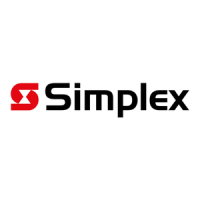Specifications
Refer to the following table for electrical and environmental requirements for the 4100 NIC and media cards.
Table 1: Electrical and environmental specifications
Electrical specifications
NIC (565-516) Startup, no media cards: 8 VDC at 110 mA Nominal, no media cards: 20 to 32 VDC at 0 mA
NIC (566-793) Nominal, no media cards: 20 to 32 VDC at 46 mA
Modem Media Card
(566-279, 566-338)
5 VDC at 180 mA max.
Dual Fiber Media Card (746-109) Using 24 V power supply: 20 VDC at 140 mA max.
Using 5 V power supply: 5 VDC at 130 mA max.
Duplex Fiber Media Card
(566-1197, 566-1198, 566-1199,
566-1200)
Using 24 V power supply: 24 VDC at 55 mA max.
Using 5 V power supply: 5 VDC at 220 mA max.
Wired Media Card (565-413) 55 mA max at 24 VDC
Output Voltage: 4.75 V min to 5.25 V max.
Environmental specifications
Operating temperature 32 ° to 120 °F (0 ° to 49 °C)
Humidity 10% to 93% relative humidity at 90 °F (32 °C)
Dual fiber-optic specifications (746-109 only)
Fiber type Multi-mode
Interface ST Connector
Wavelength 850nm
50/125 um fiber
High setting: 17 dB
Medium setting: 11.6 dB
Low setting: 6.6 dB
Allowed losses
62.5 um fiber
High setting: 20.4 dB
Medium setting: 16dB
Low setting: 11 dB
The low power setting is preferred for all 62.5 um fiber links less than 11 dB and 50 um fiber links less than 6.6 dB. JW1 is used to adjust the link
power budget. If you encounter communication problems, ensure the fiber connections comply with ANSI/TIA/EIA 568-C.3 or later industry standard.
Table 2: Duplex fiber-optic specifications
Duplex fiber-optic specifications (566-1197, 566-1198, 566-1199, or 566-1200) only
Multi-mode Right: 566-1199, Left: 566-1200Fiber Type
Single-mode Right: 566-1197, Left: 566-1198
Interface SC Connector
Right Media (SM and MM) 1310 nm transmit; 1550 nm receiveWavelength
Left Media (SM and MM) 1550 nm transmit; 1310 nm receive
50/125 um fiber 18 dB/5 kmMulti-mode
62.5/125 um fiber 18 dB/5 km
Allowed losses / distances
Single-mode 9/125 um fiber 22 dB/25 km
If you encounter communication problems, ensure fiber connections comply with ANSI/TIA/EIA 568-C.3 or later industry standard.
Initial acceptance test requirements for fiber optic installations are as follows:
• An initial acceptance test of each fiber link shall be performed as stated in NFPA 72. A fiber link is defined as all fiber segments, including patch
cords, which create a fiber path from one fiber media board to another. The fiber lines shall be tested using an OTDR. The OTDR will measure
the attenuation of the fiber as well as indicate the presence and location of connectors and any defects in the link. The fiber infrastructure
shall be accepted for use only after it has been determined it meets or exceeds industry standard ANSI TIA/EIA 568-C.3 or later (Electronic
Industries Alliance/Telecommunications Industry Association, Optical Fiber Cabling Components Standard).
• OTDR Launch and Receive cables of appropriate length shall be used. If a single cable is used, each link shall be tested in both directions.
• Multi-mode fiber links shall be measured at 850 nm and 1300 nm.
• Single-mode fiber links shall be measured at 1310 nm and 1550 nm.
page 9 579-182 Rev. V
4100/4120-6014, 4100-6078 NICs and 4100/4120-Series Media Modules Installation Instruction
